FUKUOKA
FLAME OF THE SOUTH
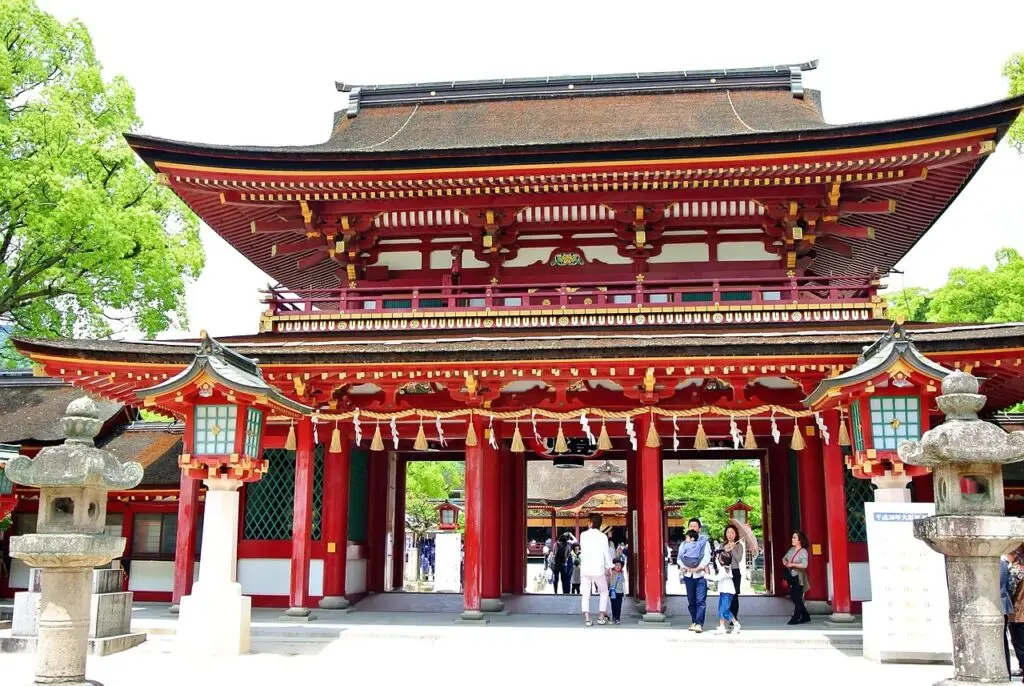
Fukuoka, the beating heart of Kyushu Island, is a coastal city where Japan’s past and present collide in the best way. Historically a vital trading link to Asia, it’s home to ancient sites like Fukuoka Castle ruins and temples that whisper tales of old. Today, it’s a modern hub with the sleek Fukuoka Tower—the tallest seaside tower in Japan—offering panoramic views, and the colorful Canal City complex buzzing with shops and entertainment. Despite its urban edge, Fukuoka keeps a chill, approachable vibe, with beaches like Momochi just a short hop away and locals who greet you with genuine warmth. It’s a city that invites you to dive into its layered charm.
It helps keep this site running, and we appreciate your support!
Sightseeing

Ohori Park
This expansive urban park, built around a pond that once served as part of Fukuoka Castle’s moat, is a beloved escape for locals and visitors alike. You can rent a swan boat to glide across the water, explore the meticulously landscaped Japanese garden, or enjoy a cup of matcha at the traditional teahouse overlooking the scenery. Just a stone’s throw from Ohori Koen Station, it’s a breeze to reach and shines brightest in spring with cherry blossoms or fall with golden foliage. Whether you’re after a picnic spot or a peaceful walk, Ohori delivers a slice of calm amid Fukuoka’s buzz.

Sumiyoshi Taisha
Tucked south of central Osaka, Sumiyoshi Taisha is one of Japan’s oldest Shinto shrines, dating back to the 3rd century, and it feels like stepping into a quieter, sacred past. Its steep, red Sorihashi bridge curves over a pond, leading to wooden halls that skip the usual Chinese-inspired paint for a natural, earthy look. Locals flock here to pray for safety at sea, and the grounds host big festivals like the summer Sumiyoshi Matsuri. It’s a peaceful retreat from the city’s hustle, radiating an ancient calm you can’t miss.
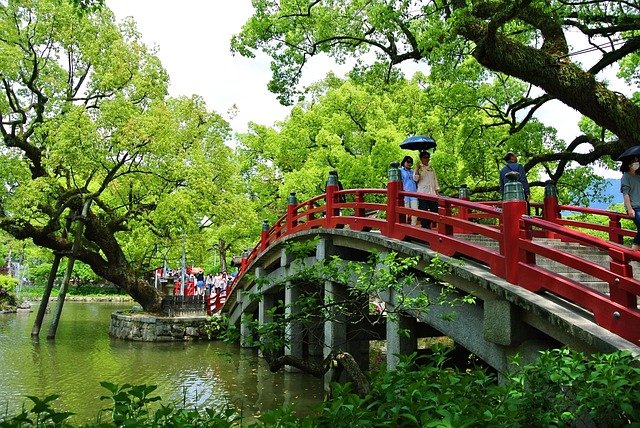
Dazaifu Tenmangu Shrine
A 40-minute train ride from Hakata Station takes you to this revered shrine dedicated to Sugawara Michizane, Japan’s deity of scholarship, making it a pilgrimage spot for students praying for exam success. The striking red torii gates and ornate main hall stand out, but the real treat comes in late February to March when over 6,000 plum trees burst into bloom. The approach is lined with quaint shops selling umegae mochi—grilled rice cakes with red bean filling—a local delicacy you won’t want to miss. It’s a cultural highlight worth the short trip from Fukuoka’s core.
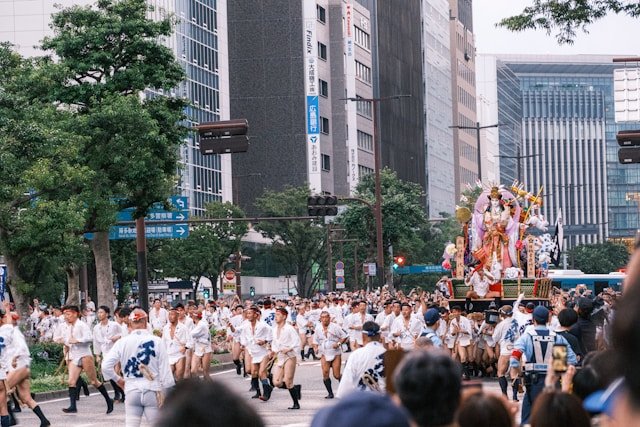
Canal City Hakata
Known as a “city within a city,” Canal City Hakata is a sprawling shopping and entertainment hub near Hakata Station, where a canal weaves through vibrant storefronts and plazas. You’ll find everything from high-end boutiques to quirky souvenir shops, plus a dizzying array of dining—think Hakata ramen, fresh sushi, or international bites. Nightly fountain shows synced to music add a splash of spectacle, while the cinema and arcade keep kids and adults entertained. Its central location makes it an easy stop for a half-day of fun, food, and retail therapy.
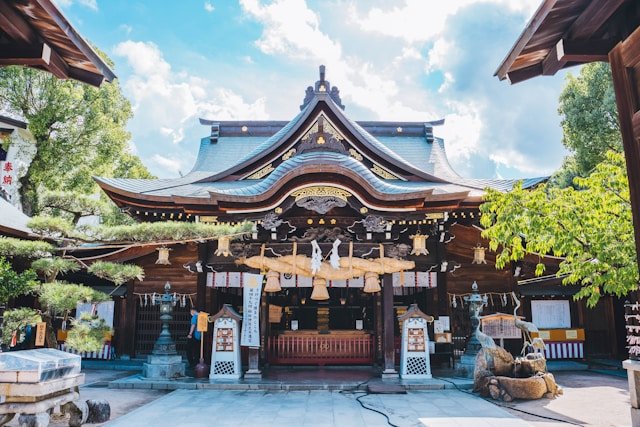
Kushida Shrine
Founded in 757, this Shinto shrine in the Gion district is Fukuoka’s oldest and the spiritual heart of the Hakata Gion Yamakasa festival, a July event featuring massive floats paraded through the streets. Year-round, its tranquil grounds and intricate decorations offer a cultural respite, with historical floats on display for a peek into the festivities. Just a short walk from Gion Station or Hakata, it’s a must-visit for soaking up local traditions and pairs well with nearby sights like Tochoji Temple or the Hakata Machiya Folk Museum.

Fukuoka Tower
Rising 234 meters above the Momochi waterfront, Fukuoka Tower holds the title of Japan’s tallest seaside tower and delivers unbeatable views from its observation deck. A quick elevator ride whisks you up to see the city sprawl, Hakata Bay shimmer, and, on clear days, distant mountains—sunset or nighttime visits are especially dazzling with the city lights aglow. Reachable by bus from Tenjin in about 20 minutes, it’s a modern landmark that blends sightseeing with a touch of futuristic flair, perfect for snapping photos or just soaking in the vista.
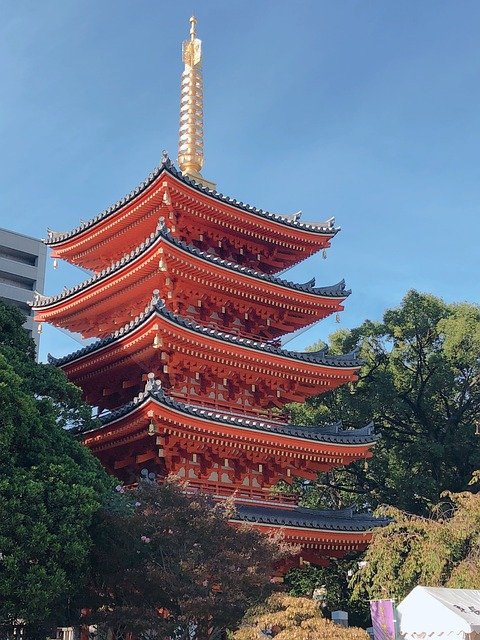
Tochoji Temple
A short walk from Gion Station, Tochoji Temple boasts Japan’s largest seated wooden Buddha statue, a 10-meter marvel carved in the 11th century and housed in a dimly lit hall that amplifies its mystique. Founded by Kobo Daishi in 806, the temple also features a striking five-story red pagoda that’s a photographer’s dream against the urban backdrop. The peaceful courtyard invites quiet reflection, making it a serene counterpoint to Fukuoka’s bustle—just steps from Hakata Station, it’s an easy yet profound stop.
Activities
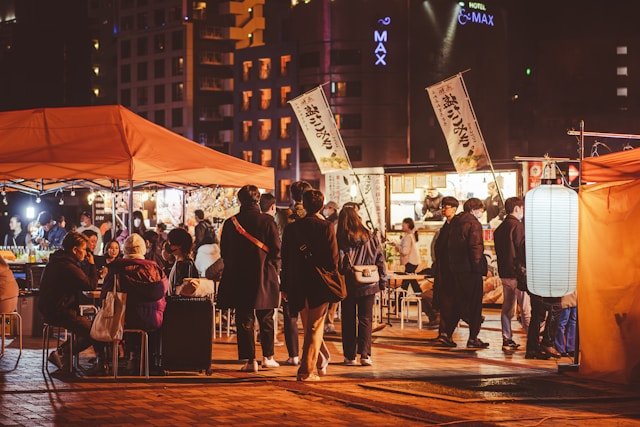
Hakata Ramen Tasting at Yatai Stalls
Fukuoka’s iconic yatai street food stalls are a must for any foodie, serving up steaming bowls of tonkotsu ramen—rich pork broth with thin noodles—right on the sidewalks of Nakasu or Tenjin. These open-air stands pop up at dusk, offering a casual, local vibe where you can chat with chefs and fellow diners. For about 800-1,200 yen, you’ll savor a dish that’s pure Fukuoka soul, best enjoyed with a cold beer or highball on a cool evening.
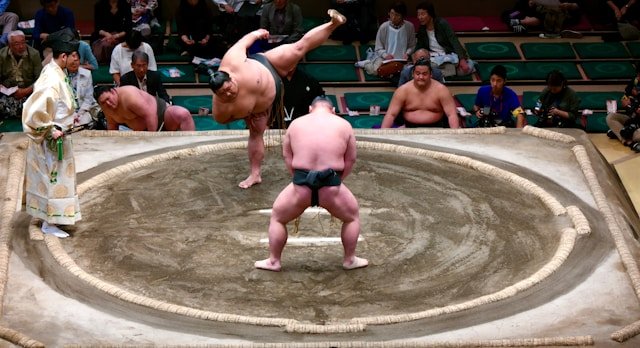
Sumo Tournament at Fukuoka Kokusai Center
If your trip aligns with November, catch the Kyushu Grand Sumo Tournament at the Fukuoka Kokusai Center near Hakata Station. This week-long event brings top wrestlers to town, blending raw athleticism with centuries-old ritual—think salt-throwing and dramatic stomps. Tickets start at 3,000 yen for general seating, and it’s a rare chance to see Japan’s national sport live in an electric atmosphere.
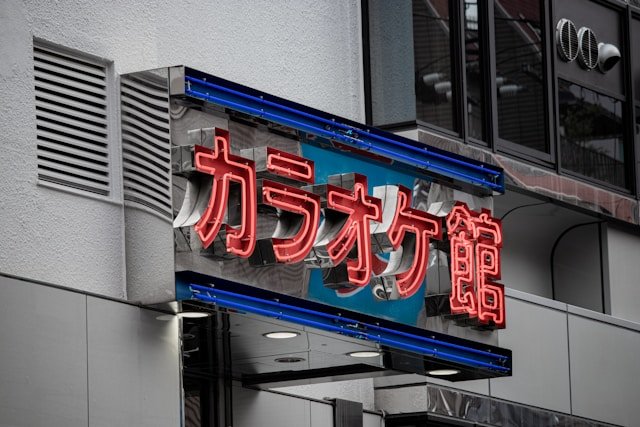
Karaoke Night in Tenjin
Tenjin’s neon-lit streets are packed with karaoke bars where you can belt out tunes in private rooms with friends or solo. Chains like Big Echo or Jankara offer affordable rates—around 500 yen per hour before 7 p.m., more after—plus drinks and snacks to keep the party going. It’s a quintessential Japanese experience, steps from Tenjin Station, perfect for unwinding or channeling your inner pop star after a day out.
